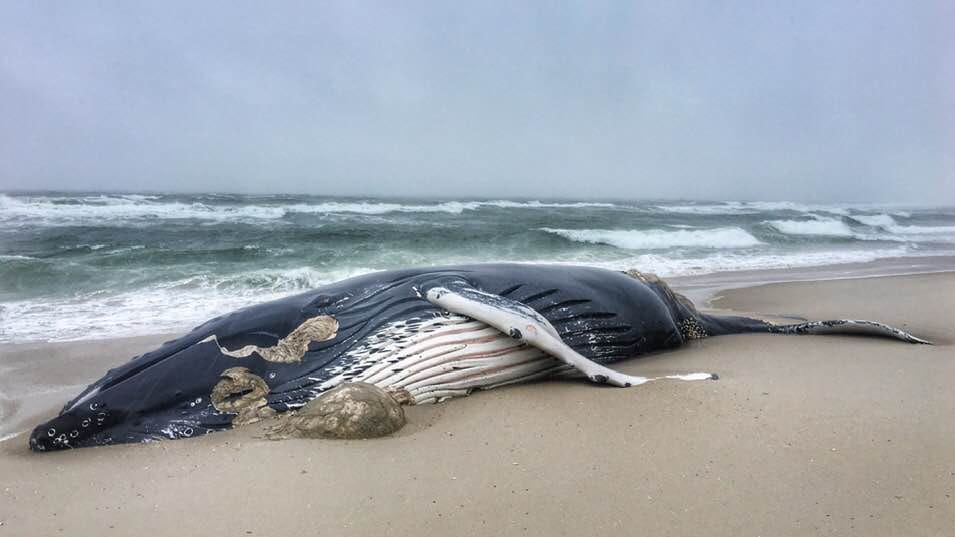Maybe you missed it but an environmental tragedy, and mystery seems to be unfolding as whales continue to wash up on the Jersey Shore.
Waves crash over an approximately 20-foot long humpback that washed ashore in the North end Brigantine Friday,
According to multiple reports, a 20-to-25 foot humpback whale washed up on the beach along Brigantine Island on Thursday. That was just a week after another whale washed up along the shore, and for those keeping score, that’s seven dead whales that have turned up in the stretch from New Jersey to New York in just more than a month.
It’s a disturbing trend that everyone wants to see come to an end.
But to make that happen, you first have to figure out why the whales are dying, and that is easier said than done. In fact, reports say that it could take “several months” for the necropsy to come back on the latest whale that washed up.
But folks already have their suspects.
The popular target in the days since the bodies began washing up has been the wind energy work that is being done offshore. Sonar mapping has reportedly been taking place as they look for locations to place wind turbines, and groups have called for an investigation into whether that is connected to the deaths. According to The Philadelphia Inquirer construction on the turbines isn’t set to take place until 2024.
The Inquirer also cited an impact state from the Bureau of Ocean Energy Management, though, that was released this summer, and said the project would have “minimal impact on ocean life, including marine mammals, but could adversely affect commercial fisheries.”

And, with the latest whale to wash up, reports say that the Marine Mammal Stranding Center noted “marks from a suspected strike” near the blowhole and a “large hematoma” and “scars from possible entanglement.” Also, Philly Voice said that a surfer who saw one of the whales, a humpback in Strathmere back on Dec. 5, “also described markings indicating a collision.”
And Philly Voice spoke with Ed Hale, an assistant professor of marine science at the University of Delaware, who said he would be more worried about ship collisions causing the incidents than the wind work.
“Severe injuries from ships traveling at accelerated speeds, particularly for trans oceanic migrations and then through coastal ports is probably a higher concern, on my radar anyway, he told the site.
Either could be the cause. It could also be both. Or this all might just be the continuation of a longer, concerning trend. Because, according to The Philadelphia Inquirer that the National Marine Fisheries Service has “designated an unusual mortality event for humpback whales along the Atlantic Coast.” That has shown, according to the report, that 174 humpbacks have died since 2016 — long before the sonar mapping for wind work began — with necropsies done on about half of them. And nearly 40% of those whales “showed evidence of either a ship strike or entanglement in nets.”
Suspects but for now very little in the way of a real answer.
Is it the continuation of a trend that has been building for several years? Or is something else amiss off the Jersey Shore?
Hopefully, the culprit is identified before more whales die.









